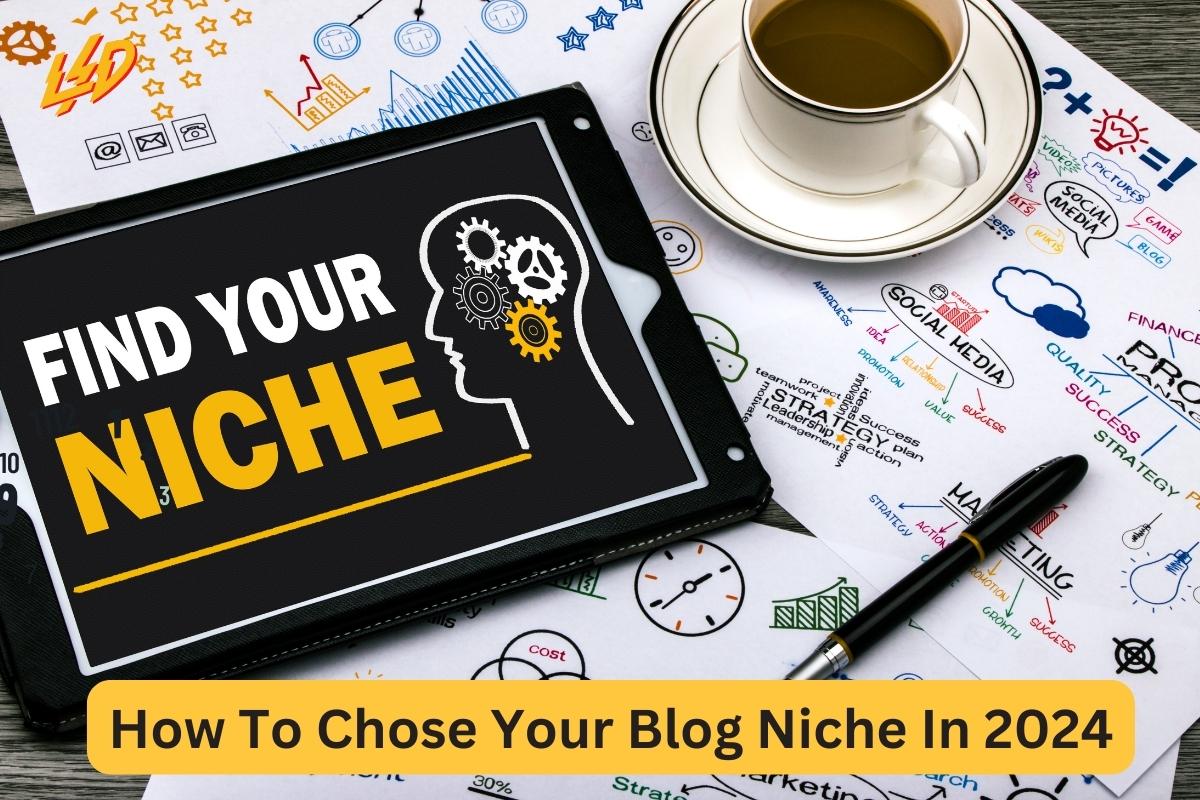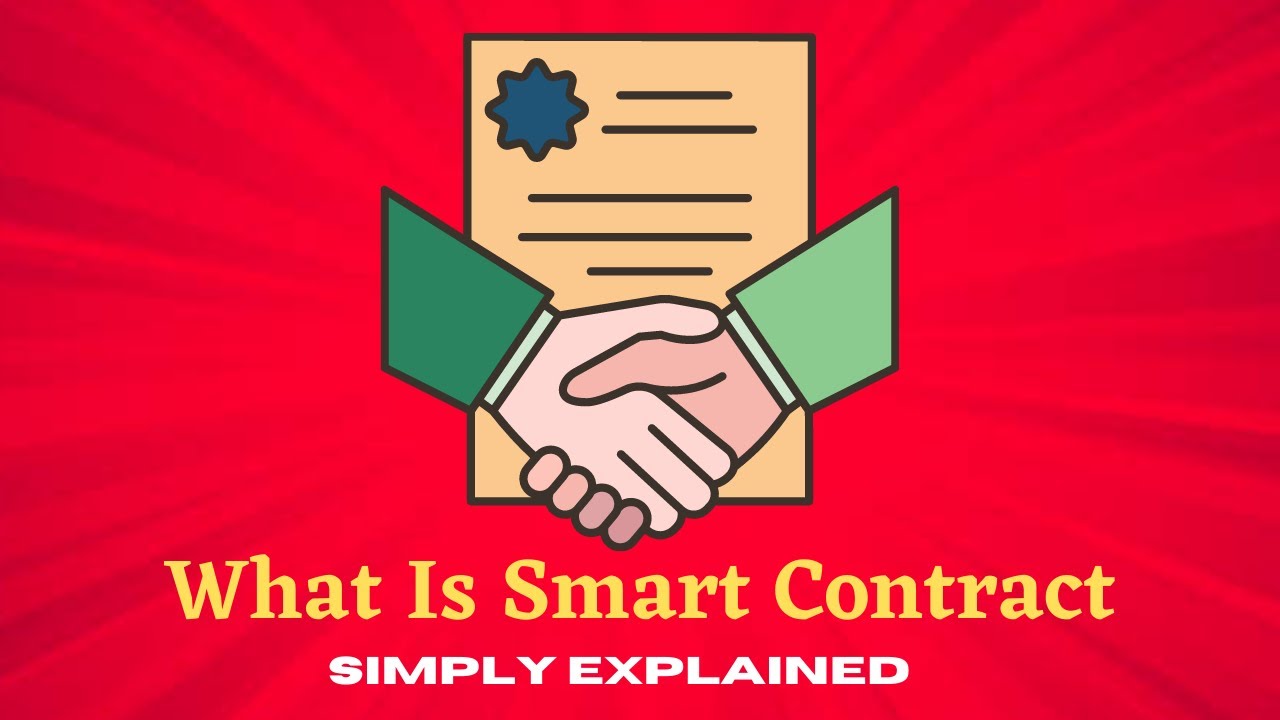Welcome to our comprehensive guide tailored for Pakistani entrepreneurs planning to venture into the Amazon marketplace. With Amazon’s global reach and millions of daily shoppers, there’s never been a better time to dive into e-commerce. Whether you’re an established business owner or a budding entrepreneur, this guide will walk you through the crucial steps towards setting up a successful business on Amazon and selling on Amazon from Pakistan. This step-by-step guide is designed to demystify the process and provide you with practical, actionable insights. So, let’s embark on this e-commerce journey together, breaking down borders and opening doors to a world of possibility, and start selling on Amazon Now!
Why Start a Business on Amazon?
Starting a business on Amazon presents an attractive proposition for ambitious Pakistani entrepreneurs. Amazon’s robust infrastructure, coupled with its massive customer base, offers an unparalleled opportunity for growth. Businesses on Amazon have access to a worldwide customer base, which can significantly increase their visibility and sales. Furthermore, Amazon handles many of the logistical complexities, such as warehousing and shipping, through its Fulfillment By Amazon (FBA) service, letting business owners focus on sourcing high-quality products and improving their customer service.
Why Choose Amazon Over All Other Platforms?
Amazon stands out from other e-commerce platforms due to its customer-centric approach, sophisticated algorithm that improves product visibility, and a comprehensive suite of tools designed to aid sellers in their business journey. The platform’s extensive reach and reputation for excellent customer service make it a favorite among online shoppers, translating into higher potential sales for businesses. Amazon also offers a variety of resources, from advertising services to detailed analytics, to help businesses understand their audience, boost their visibility, and ultimately drive their growth. Combined with its user-friendly interface and secure payment systems, Amazon provides an unmatched e-commerce experience for both sellers and buyers.
Is Amazon Available in Pakistan?
Yes, Amazon is available in Pakistan and has opened its doors to Pakistani sellers. However, directly buying from Amazon is not yet possible for Pakistani consumers. This is a significant opportunity for entrepreneurs and businesses interested in selling on Amazon to reach a global market.
Can We Do Business on Amazon from Pakistan?
Absolutely! Pakistani entrepreneurs can indeed start and run a successful business on Amazon. The process involves setting up a seller account, finding profitable products, sourcing from reliable suppliers, and then listing and selling those products on Amazon. This opens up a world of possibilities for Pakistani business owners to tap into Amazon’s vast global customer base and robust infrastructure. With determination, hard work, and the right strategies, businesses from Pakistan can thrive on Amazon.
How to Open an Amazon Account in Pakistan?
Opening an Amazon Seller account from Pakistan is a straightforward process. Here’s how to do it:
1. Visit the Amazon Seller Central site: Visit Amazon Seller Central (sellercentral.amazon.com) and click on the ‘Register now’ button.
2. Choose your marketplace: Choose the Amazon marketplace where you want to sell your products.
3. Create your account: Click on “Create a new Amazon account”. You’ll be prompted to enter your name, email, and password.
4. Provide your business information: You’ll need to provide your business name, address, and phone number. You can use your personal information if you’re a sole proprietor.
5. Set up your billing method: Enter the necessary billing and deposit information. You’ll need a credit card that can make international payments and a bank account that accepts international transactions.
6. Verify your identity: You’ll have to verify your identity with a valid passport or other ID document. This is a crucial step in the process, and your account won’t be activated until it’s complete.
7. Wait for approval: Once you’ve completed all the steps, Amazon will review your application and approve it within a few days. You’ll receive an email notification once your account is approved and ready to use.
Setting Up an LLC for Amazon Business in Pakistan
Setting up an Limited Liability Company (LLC) for your Amazon business is an essential step for Pakistani entrepreneurs looking to sell on foreign marketplaces. Here’s how to do it:
Applying for an LLC in the US
- Choose a unique business name: Check the US state’s database where you plan to form your LLC to ensure the name isn’t already taken.
- Select a Registered Agent: Choose an individual or business entity authorized to do business in the state to receive important legal documents on your behalf.
- File the Articles of Organization: This document includes information about your business and needs to be filed with the state’s Secretary of State office.
- Create an Operating Agreement: This outlines the ownership and operating procedures of the LLC.
- Obtain an EIN: Apply for an Employer Identification Number (EIN) from the Internal Revenue Service (IRS). This is essential for tax purposes.
Applying for an LLC in the UK
- Select a company name: Make sure the name you choose is unique and not used by any other business in the UK.
- Choose a registered office: This must be a physical address in the UK where official documents can be sent.
- Name your directors and company secretary: You must register at least one director and, optionally, a company secretary.
- Prepare your ‘memorandum of association’ and ‘articles of association’: These documents define your company’s purpose and the rules for running the company.
- Identify people with significant control (PSC): You need to register individuals who have significant control over your company.
- Register your company with Companies House: You can do this online or by post, and pay the required fee.
For other countries, consult a local legal expert to guide you.
Companies to Help Pakistani Entrepreneurs Open an LLC in the US, UK, or Other Countries
Numerous service providers specialize in helping foreign entrepreneurs, including those from Pakistan, to set up an LLCs in various countries. Here are a few notable ones:
1. LegalZoom
LegalZoom is a well-known online legal services provider that can assist with setting up an LLC in the US. They handle all the paperwork and filing, providing comprehensive services from business name search to acquiring an EIN.
2. ZenBusiness
ZenBusiness is another trusted provider that offers affordable LLC formation services. They offer a range of packages that include registered agent services, operating agreement templates, and more.
3. Rocket Lawyer
Rocket Lawyer provides legal services not only for the US but also for the UK and other countries. Their services extend beyond forming an LLC and include legal document reviews and attorney consultations.
4. Incfile
Incfile offers affordable LLC formation and provides a free one-year registered agent service. They have a transparent pricing structure and also assist with other business services like tax consultations.
5. Northwest Registered Agent
Northwest Registered Agent provides LLC formation services with a strong focus on privacy and customer service. They include a year of registered agent service with their LLC formation package.
For entrepreneurs in Pakistan seeking to establish an LLC in other countries, it’s advised to consult with local legal firms or business consultancies who specialize in international business formation. They can provide up-to-date information and guidance on the processes and requirements in those countries. Always ensure to verify the credibility and track record of any company you choose to engage for these services.
in
What Are the Steps to Start a Business on Amazon from Pakistan?
- Research: Before diving in, it’s crucial to do thorough research on Amazon’s policies, fees, and product trends. This will help set realistic expectations and identify potential obstacles.
- Create a Seller Account: The first step is to create a seller account on Amazon. This includes providing personal and business information, choosing a selling plan, and verifying your identity.
- Source Products: Find profitable products that are in demand on Amazon. This can include sourcing from local manufacturers or using Alibaba to find reliable suppliers.
- List Your Products: Once you have sourced your products, it’s time to create product listings on Amazon. This involves writing compelling product descriptions, optimizing keywords, and adding high-quality images.
- Fulfillment: You can either fulfill orders yourself or use Amazon’s FBA service, where they handle storage, packaging, and shipping for a fee.
- Marketing and Advertising: To increase visibility and drive sales, businesses on Amazon can use various advertising options like sponsored products, display ads, and more.
- Provide Excellent Customer Service: Amazon values excellent customer service, so it’s essential to respond promptly to any inquiries or issues from customers. This can help build a good reputation and lead to positive reviews.
How to Start Selling on Amazon?
Starting your Amazon business can be both exciting and a bit daunting. Here’s a step-by-step guide to help you navigate through the process and make the most out of your entrepreneurial journey.
Step 1: Register Your Seller Account
To start selling on Amazon, the first step is to set up your seller account. Visit Amazon’s website and navigate to the “Sell” section. Here, you’ll be asked to provide information such as your name, email address, and a password. Follow the prompts and verify your email address to complete the registration.
Step 2: Choose Your Selling Plan
Amazon offers two selling plans: Individual and Professional. The Individual plan is for sellers who sell fewer than 40 items per month, while the Professional plan caters to larger sellers. Each has its own set of fees and features, so choose the one that best fits your business needs.
Step 3: Find Your Niche
Choosing a profitable niche is crucial for success on Amazon. Consider your interests, expertise, and the types of products that might fill a gap in the market. Conduct market research to identify trends and customer needs, and check out the competition in various categories. Useful tools for this research include Jungle Scout and Helium 10, which can provide insights into sales data, competition levels, and potential profitability. Also, consider the size and weight of the products (since this affects shipping costs), and the potential for adding your own unique touch to make the product stand out.
Conduct Niche and Winning Product Research
Once you’ve got a general idea of your niche, it’s time to dive deeper into product research. This process is pivotal in determining the profitability and sustainability of your business on Amazon.
- Understand Amazon’s Best Sellers Rank (BSR): Amazon’s BSR is a good place to start. It’s a ranking system that shows the popularity of a product in its category. High-ranking items are usually high demand, but they also come with fiercer competition. A balance between demand and competition is ideal.
- Use Tools for Market Analysis: Tools like Jungle Scout, Helium 10, and Viral Launch can provide detailed insights into a product’s sales velocity, competition, trends, reviews, and more. These tools can save you a significant amount of time and help you make data-driven decisions.
- Analyze Customer Reviews and Q&As: By reading reviews and Q&As of similar products, you can gain insights into customers’ pain points and understand what they’re looking for in a product. This can help you improve your product to better meet customer needs.
- Evaluate the Competition: Look at the top sellers in your chosen niche, and analyze their product listings, prices, images, and customer reviews. This can give you an idea of what’s working and what you could do better.
- Consider the Seasonality of the Product: Some products may sell well during certain seasons but not others. Google Trends is a free tool that can help you identify seasonal trends for your products.
- Consider the Costs: It’s not just about finding a product that sells; it’s about finding a product that sells with a good profit margin. Take into account all costs, including manufacturing, shipping, Amazon fees, taxes, and advertising.
Remember, there’s no foolproof method or shortcut to finding a winning product. It requires time, patience, and a lot of research. But with these tips and tricks, you’ll be well on your way to uncovering profitable opportunities on Amazon.
Step 4: Source Your Products
Once you have identified your niche, it’s time to source products. You can either manufacture them yourself or purchase them from wholesalers or suppliers. Consider factors such as quality, cost, and shipping options when choosing a supplier. It’s also essential to ensure that the products meet Amazon’s requirements and comply with any laws or regulations in your target market.
Product Sourcing Locations
There are a variety of places to source your products from depending on your specific needs. The most common places include:
1. Alibaba: Alibaba is a major global trading platform where you can find suppliers from all over the world, particularly from Asia. It’s ideal for bulk orders and offers a wide variety of products.
2. Local Manufacturers: If you want to sell products that are proudly made in your home country, partnering with local manufacturers can be a great option. This not only supports local businesses but also can appeal to customers who value locally made goods.
3. Wholesale Markets: These are places where you can buy large quantities of goods at a lower price. They’re available in most countries and can provide you with products ranging from electronics to apparel and more.
4. Dropshipping Suppliers: If you want to avoid dealing with inventory and shipping, dropshipping can be a good option. Suppliers like Oberlo, Doba, and SaleHoo offer dropshipping services where they handle the inventory and shipping for you.
Remember to always do thorough research on potential suppliers to ensure they’re reliable and provide high-quality goods. Always ask for samples before making a large order, and consider using secure payment methods to protect your investment.
Step 5: Create Compelling Product Listings
Once you have your products, it’s time to create product listings on Amazon. This is where you’ll write product descriptions, add images, and optimize keywords for search rankings. Keep in mind that Amazon has strict guidelines for product listings, so make sure to follow them carefully.
Optimize Your Product Listings
Creating an optimized product listing is crucial to your success on Amazon. Here’s how you can make your listing stand out:
1. Product Titles: The product title should be concise yet informative. It should include essential information such as the brand name, product type, material or key feature, size, and color. Avoid using promotional phrases like “best seller,” “top-rated,” etc., as they are against Amazon’s guidelines.
2. Product Images: Images are the first thing customers notice, so ensure they are high quality and clearly display the product. Amazon allows up to 9 images, including a main image. The main image should be of the product alone, on a white background. The other images can show the product in use, highlight key features, or include size or dimension references. Using professional photography can significantly enhance your product listing.
3. Bullet Points: The five bullet points allowed by Amazon are an opportunity to highlight the product’s key features and benefits. Make them concise, easy-to-read, and customer-focused.
4. Product Description: The product description allows you to provide a more detailed explanation of the product and its features. Use this space to tell a story about the product, include additional details not covered in the bullet points, and weave in relevant keywords naturally.
5. Search Engine Optimization (SEO): To improve your product’s visibility, it’s vital to understand and use Amazon SEO. This includes researching and using relevant keywords in your product title, bullet points, and product description. Tools such as Jungle Scout, Helium 10, or AMZScout can help identify high-performing keywords.
6. Backend Keywords: Amazon allows you to add 250 bytes of hidden keywords. These are keywords that might be relevant but did not fit naturally into your title, bullet points, or product description. They help in search relevance but are not visible to customers.
Remember, an optimized product listing can increase visibility, click-through rates, and conversions. Regularly monitoring and updating your listing based on customer feedback and keyword performance can help maintain a high-quality product listing.
Popular Products on Amazon in 2024
As of 2024, several product categories have been dominating the Amazon marketplace.
1. Eco-friendly Products: With growing awareness about environmental issues, consumers are making conscientious decisions to purchase sustainable and eco-friendly products. Items such as reusable shopping bags, bamboo toothbrushes, and solar-powered gadgets have seen a remarkable surge in popularity.
2. Health and Fitness Equipment: The continued emphasis on health and wellbeing has led to increased sales of fitness equipment. This includes home workout equipment, yoga mats, and wearable fitness trackers.
3. Home Improvement Tools: With more people working and learning from home, there’s an increasing demand for home improvement tools and products. These range from functional items like ergonomic furniture and lighting solutions to decorative items that enhance the aesthetics of the home workspace.
4. Wellness Products: Products aimed at promoting wellness and self-care, such as essential oils, diffusers, skin care products, and holistic health supplements, continue to be popular among Amazon customers.
5. Tech Gadgets: As technology continues to evolve at a rapid pace, the demand for the latest tech gadgets does not wane. High-tech devices such as smart speakers, wireless charging stations, and virtual reality headsets have become top-sellers on Amazon.
Please note that these trends are subject to change based on consumer behavior, upcoming innovations, and world events. Staying updated on market trends is crucial for sellers to remain competitive and successful.
Step 6: Choose Your Fulfillment Method
After setting up your product listings, the next step is to determine how you will fulfill your orders. Amazon offers two primary methods of fulfillment: Fulfillment by Amazon (FBA) and Fulfillment by Merchant (FBM).
1. Fulfillment by Amazon (FBA): With FBA, you send your products to Amazon’s warehouses, and they take care of storage, packaging, and shipping to customers. Amazon also handles customer service and returns for these orders. This method can save you a lot of time and effort but comes with associated costs and inventory rules.
2. Fulfillment by Merchant (FBM): FBM, on the other hand, requires you to handle the storage, packing, and shipping of your products to customers. This method gives you more control over your inventory and can be more cost-effective, especially for higher-priced items, but requires more hands-on work.
It’s essential to evaluate the pros and cons of each method and decide which is the best fit for your business model, financial capabilities, and personal preferences. You can also choose to use a mix of both FBA and FBM for different products depending on their demand, profitability, and size. Always remember that effective fulfillment can significantly impact customer satisfaction and your overall success on Amazon.
Step 7: Leverage Marketing Strategies
While optimizing your product listings is crucial, it’s also essential to market your products to reach a broader audience. Some effective marketing strategies for selling on Amazon include:
1. Pay-Per-Click (PPC) Advertising: This is a form of online advertising where advertisers pay each time a user clicks on their ad. Amazon offers PPC advertising through its Sponsored Products, Sponsored Brands, and Product Display Ads.
2. Influencer Marketing: Partnering with influencers in your niche can help you reach a highly engaged audience and drive sales. Make sure to choose influencers whose followers align with your target market.
3. Social Media Marketing: Utilizing social media platforms such as Instagram, Facebook, and Pinterest can help you showcase your products, engage with potential customers, and drive traffic to your Amazon listings.
4. Product Promotions: Offering discounts or deals on your products through Amazon promotions can attract more customers. These include Lightning Deals, Coupons, or Giveaways.
Remember to track the performance of your marketing efforts and make adjustments as needed.
Step 8: Customer Reviews, Support & Services
In the realm of online shopping, customer reviews wield significant influence over purchasing decisions. It’s therefore crucial to monitor and manage customer reviews to maintain a positive image of your product and brand. Encourage your customers to leave reviews, and make sure to respond to both positive and negative reviews in a professional and timely manner.
In addition to reviews, providing excellent customer support can substantially affect your brand’s reputation and customer loyalty. Be prompt and helpful in addressing customer queries, and ensure that issues are resolved satisfactorily. Whether it’s about product details, shipping, or returns, clear and effective communication can lead to positive customer experiences and improved seller ratings.
Additionally, offering value-added services can set you apart from other sellers. This could include providing detailed product guides, helpful installation videos, or even after-sales services. However, these services should be viable and align with your business model.
Tips for Success on Amazon
Success on Amazon requires strategic planning, persistent effort, and a customer-centric approach. Here are some tips to aid in your success:
1. Stay Updated with Market Trends: As an Amazon seller, keeping an eye on the latest market trends is critical. Adapt your product offerings and marketing strategies according to consumer behavior, emerging products, and industry innovations.
2. Optimize Your Product Listings: Make sure that your product titles, descriptions, images, and keywords are optimized. Also, include all the necessary product specifications and features. A well-optimized listing can significantly enhance your product’s visibility and conversions.
3. Maintain a Competitive Pricing Strategy: Pricing plays a crucial role in driving sales. Keep a close watch on your competitors’ pricing and make sure your products are competitively priced. However, do not compromise on quality for the sake of price.
4. Prioritize Customer Satisfaction: Strive to maintain high standards of customer service. Quick and effective resolution of customer issues, clear communication, and going the extra mile to meet customer needs can earn you positive reviews, boost customer loyalty and enhance your seller rating.
5. Monitor Your Seller Metrics: Amazon tracks a variety of seller metrics to assess your performance. These include order defect rate, cancellation rate, late shipment rate, and others. Regularly monitor and strive to improve these metrics to stay in Amazon’s good graces.
6. Utilize Amazon’s Marketing Tools: Leverage the various marketing tools provided by Amazon such as Sponsored Products, Amazon PPC, and promotional campaigns to increase your product’s visibility and sales.
Remember, there is no one-size-fits-all strategy for success on Amazon. Continually test various strategies, learn from your experiences, and tweak your approach for continuous improvement. With dedication, perseverance, and a customer-centric mindset, you can achieve success as an Amazon seller. There is always room for growth and improvement in your Amazon business venture. Keep exploring new techniques and strategies to stay ahead of the competition and continue increasing your sales and profitability on the platform. With persistence and adaptability, you can thrive in the ever-evolving world of e-commerce on Amazon. So, don’t be afraid to take risks, learn from your mistakes, and keep pushing toward success!
Final Words:
Selling on Amazon may seem daunting at first, but with the right approach, it can be a rewarding and lucrative experience. Remember, the key to success lies in understanding the platform, optimizing your product listings, implementing effective marketing strategies, maintaining stellar customer service, and staying tuned to market trends. There’s no shortcut to success, but with persistence, adaptability, a keen understanding of your customers, and a willingness to learn and improve, you can truly thrive as an Amazon seller.
Read More: How Can I Start My Own Business with No Money 2024?
Frequently Asked Questions:
1. How do I become an Amazon seller?
To become an Amazon seller, you need to create a seller account on Amazon, list your products, and optimize your listings. Once your products are sold, Amazon handles the payment processing and you ship the products to the customer.
2. What can I sell on Amazon?
You can sell a wide range of products on Amazon. However, some categories and products require Amazon’s approval. Make sure to check Amazon’s product guidelines before listing your products.
3. How does Amazon handle shipping?
Amazon offers Fulfillment by Amazon (FBA), where you send your products to an Amazon fulfillment center, and they handle storage, packaging, and shipping. You can also opt for Fulfillment by Merchant (FBM), where you handle the shipping process.
4. How can I improve my Amazon seller ratings?
Providing excellent customer service, responding to customer queries promptly, resolving issues effectively, and maintaining high-quality product offerings are some ways to improve your seller ratings.
5. How can I drive more traffic to my Amazon listings?
Optimizing your product listings, utilizing Amazon’s marketing tools such as PPC advertising, and leveraging social media marketing can help drive more traffic to your listings.
6. Is it too late to start selling on Amazon in 2024?
It’s never too late to start selling on Amazon. Despite the growing competition, Amazon continues to expand its customer base, making room for new sellers to enter the market. The key is to identify unique product niches, understand your customer base, and offer high-quality products. With effective marketing strategies and stellar customer service, you can certainly carve out your space and achieve success on Amazon, even in 2024 and beyond. So don’t hesitate to jump in and start your journey as an Amazon seller!
7. Does Amazon allow Pakistani sellers?
Yes, Amazon does allow Pakistani sellers. In May 2020, Pakistan was added to Amazon’s approved seller list, enabling businesses and individuals within Pakistan to sell their products on the platform. However, similar to sellers from other countries, Pakistani sellers must comply with Amazon’s selling policies and guidelines.
8. How much does it cost to sell on Amazon in 2023?
The cost to sell on Amazon in 2023 depends on the type of selling plan you choose. Amazon offers two selling plans: Individual and Professional. The Individual plan does not have a monthly subscription fee, but charges $0.99 per item sold. This plan is suitable for sellers who sell fewer than 40 items a month. On the other hand, the Professional plan comes with a monthly subscription fee of $39.99, but does not charge per item sold. This plan is ideal for sellers who sell more than 40 items a month. Additionally, both plans include other selling fees such as referral fees, variable closing fees, and costs related to Amazon’s optional services like Fulfillment by Amazon. It’s important to note that these costs can vary depending on the product category and other factors. Always check Amazon’s latest fee schedule before making a decision. In conclusion, selling on Amazon in 2023 can be a profitable venture, but it’s essential to carefully consider your costs and optimize your sales strategies to maximize profitability. It may require some investment upfront, but with the right approach and dedication, you can certainly reap the benefits of selling on one of the world’s largest e-commerce platforms.
















